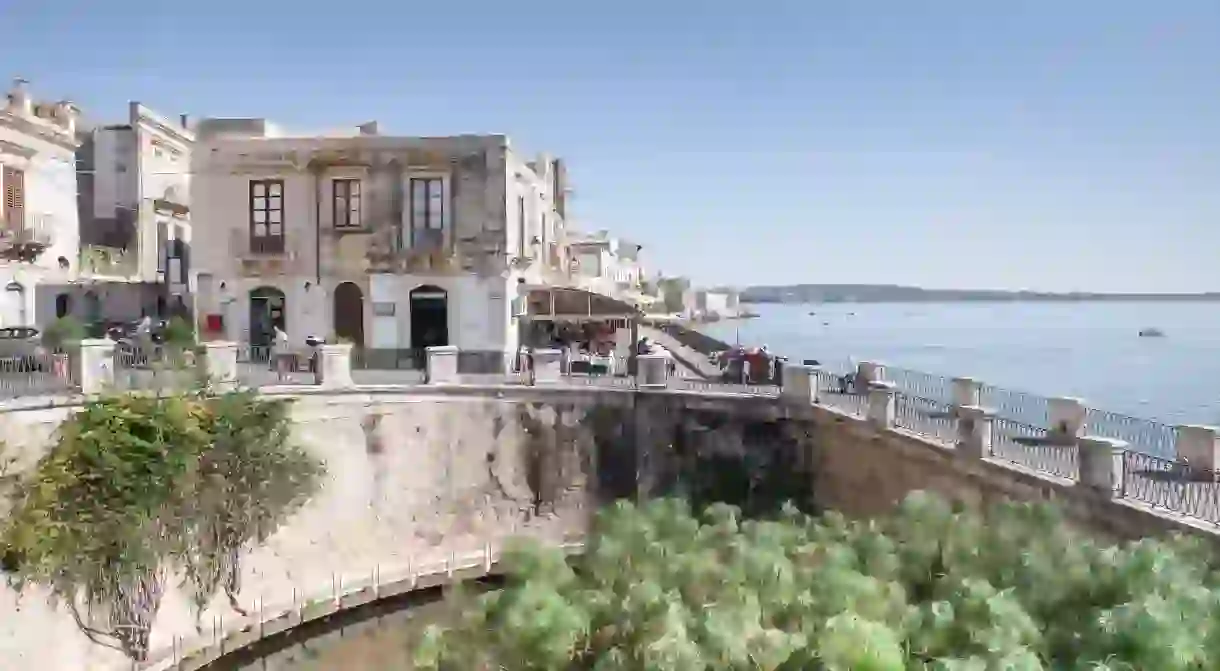How to Spend a Week in Sicily, Italy

Sicily is the largest island in the Mediterranean, offering travellers an array of vibrant cities, ancient ruins, diverse landscapes and food bursting with flavour. It’d be impossible to cram everything it has to offer into a week, so to help you plan your Sicily itinerary, we’ve picked out the highlights.
Want to visit Sicily without having to plan your own itinerary? Let Culture Trip show you the highlights – plus a sprinkling of surprise locations – on our exclusive 10-day Sicily adventure, led by our Local Insider.
Explore Palermo
Architectural Landmark

Palermo, the capital of Sicily, is an ideal base to get a feel for the eclectic cultural heritage of the island, which is reflected in the combination of Norman, Arab, gothic and neoclassical architecture. Palermo Cathedral, founded in 1184 and heavily adapted as a result of numerous foreign invasions over the years, is a must-visit landmark. Embrace the chaos of the markets – Ballarò or Il Capo are particularly rambunctious – and be sure to try traditional street-food delicacies such as arancine (deep-fried stuffed rice balls with a meaty filling), panelle (chickpea fritters) and sfincione (Sicilian deep-pan pizza).
Hike in the Zingaro Nature Reserve
Park
Wander through the Valley of the Temples
Archaeological site

Go island-hopping
Natural Feature
That’s right – Sicily is an island with several islands of its own. The Aeolian archipelago, reachable by ferry from Milazzo, comprises seven volcanic islands in the Tyrrhenian Sea. You’ll find the best choice of accommodation and restaurants in Lipari (the largest Aeolian island), while Panarea offers an exuberant nightlife scene. Hike up an active volcano on Stromboli – one of the activities featured on our 10-day Sicily trip – soak in geothermal mud baths in Vulcano, or watch the sunset at Pollara Beach in Salina. The Aegadian islands, off the west coast, are also worth considering as a day trip from Trapani.
Climb from Taormina to Castelmola
Natural Feature

The atmospheric hilltop town of Taormina, on the east coast, is a captivating place to wander through – whether along the cobblestone streets and into medieval palazzos, or between the crumbling stone walls of the ancient Greek-Roman amphitheatre. The impressive landmark is still used for concerts, so it’s worth checking the schedule for upcoming shows. The views of Mount Etna and the Ionian Sea from here are quite spectacular, but for an even better vista, follow the Saracen Trail up to Castelmola and reward yourself with a cold Sicilian beer at the top. It’s around a 45-minute uphill hike.
Visit Mount Etna
Natural Feature

Mount Etna, the most active volcano in Europe, is an ever-present reminder of Mother Nature. Thankfully, it’s safe to hike, and there are numerous walking trails on the lower slopes. If you want to peer into the craters at the top, join a guided summit tour up to 3,300m (10,827ft) above sea level. Alternatively, hop in a cable car which takes you from Rifugio Sapienza up to 2,500m (8,202ft). Or you can enjoy a relaxing journey around the Circumetnea Railway, stopping at idyllic vineyards such as Benanti (in Viagrande) and Tenuta delle Terre Nere (in Randazzo) en route.
Admire architectural gems in Catania
Architectural Landmark

Beyond the foothills of Etna, Catania can often get overlooked by travellers, but is a worthwhile stop for its rich blend of Norman and baroque architecture. It’s part of the Unesco-listed Val di Noto area, along with eight other towns on the southeastern coast. Catania Cathedral, the Benedictine Monastery and Ursino Castle (including the civic museum) are notable highlights. Catania also has some of the most ebullient nightlife in Sicily; head to the streets around the Piazza del Duomo for a great choice of bars and clubs. The fish market (La Pescheria), meanwhile, is regarded as one of the best in Italy.
Embrace the ancient history of Syracuse
Architectural Landmark
Founded by Corinthians around 734BCE, Syracuse was one of the first major colonies on the island and became the chief city of ancient Greek Sicily. Its Greek (and Roman) heritage is still clearly visible today, most notably in the Neapolis Archaeological Park. This contains an enormous Greek theatre and Roman amphitheatre, plus the Ear of Dionysius – a man-made cave carved into the Teminite Hill, known for its powerful acoustic effects. Take a stroll across the Umbertino Bridge to the old town, on the island of Ortigia, and soak up the charming atmosphere as you meander the narrow, pedestrianised streets.













